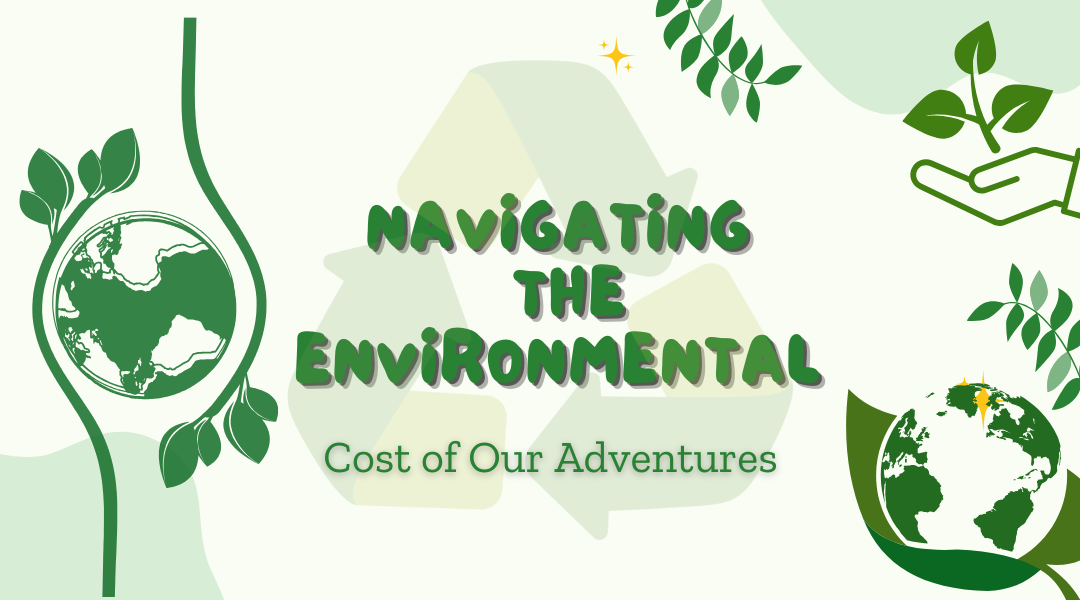The urge to explore is a fundamental part of being human. We dream of pristine beaches, ancient forests, and vibrant cities. Yet, as more of us than ever before act on that urge, we’re confronted with an uncomfortable truth: our collective adventures are leaving a deep and lasting scar on the very planet we seek to experience.
This isn’t about shaming the traveler but about fostering a new, more conscious era of exploration. By understanding the full scope of tourism’s impact, we can transform from passive tourists into active stewards, ensuring the world’s wonders remain for generations to come.
The Unseen Toll of a Global Industry
Beneath the glossy surface of vacation brochures lies a complex web of environmental challenges.
- The Carbon Cost of Getting There: The journey itself is often the biggest culprit. Aviation, responsible for a significant and growing share of global emissions, pumps greenhouse gases directly into the upper atmosphere, intensifying their warming effect. Imagine the contrail of a single long-haul flight; now picture the thousands crisscrossing the skies daily. Similarly, the cruise industry, often marketed as a luxurious escape, relies on heavy fuel oil, emitting not only CO2 but also other pollutants that harm marine and coastal air quality.
- When Development Destroys Destination: The infrastructure built to accommodate us often comes at a dire cost. Picture a secluded coastal bay, once a critical nesting ground for sea turtles, now transformed by the construction of a mega-resort. This scenario of habitat destruction and deforestation for hotels, roads, and attractions is repeated globally, fracturing ecosystems and pushing vulnerable species to the brink. The very character of a place is eroded in the race to cater to tourists.
- The Strain on Local Resources: In many popular destinations, the influx of visitors creates a silent crisis of resource depletion. A golf course in a desert landscape, lush and green, can consume millions of gallons of water daily, draining local aquifers and leaving communities struggling. Resorts with their sprawling pools, air-conditioned lobbies, and landscaped gardens place an immense strain on local energy grids and water supplies, often prioritizing tourist comfort over community needs.
Charting a New Course: The Pillars of Responsible Travel
The solution lies not in stopping travel, but in traveling smarter. A multi-faceted approach involving travelers, businesses, and governments can pivot the industry toward a sustainable future.
1. Embracing a Circular Mindset: Beyond Recycling Bins
True waste management goes far beyond placing a few recycling bins in a hotel lobby. It’s about building a “circular economy” within tourism. Forward-thinking hotels are now implementing systems to eliminate single-use plastics entirely, opting for refillable water stations and biodegradable packaging. On the island of Palau, visitors must sign an eco-pledge stamped into their passport, committing to act in an environmentally responsible way. Destinations are investing in modern composting facilities to handle organic waste from restaurants, turning it into nutrient-rich soil for local farms, thus closing the loop.
2. Powering Progress with Green Innovation
Technology is our greatest ally in decarbonizing travel. The emergence of Sustainable Aviation Fuels (SAFs), made from sources like waste cooking oil, promises to dramatically cut flight emissions. On the ground, the shift is tangible: Costa Rica, for instance, powers nearly its entire grid on renewables, meaning electric rental cars and lodges are often running on clean energy. Innovations like solar-powered resorts and water-reclamation systems are moving from niche concepts to industry standards, proving that luxury and sustainability can coexist.
3. The Rise of the Conscious Traveler
Ultimately, the power of the purse is immense. “Eco-tourism” is evolving from a buzzword into a philosophy. It means making deliberate choices: selecting a small, locally-owned ecolodge over an international chain, one that employs community members and funds local conservation projects. It involves engaging in wildlife tourism that respects animals, observing them from a safe distance in their natural habitat rather than posing for a photo with a sedated tiger. It’s about spending our money on experiences that enrich the local economy and empower communities to protect their natural heritage.
Conclusion: The Choice is Ours to Make
The path forward presents a clear choice. We can continue with business as usual, watching the world’s most beloved destinations suffer from overcrowding and environmental decay. Or, we can embrace a new model of travel—one built on respect, awareness, and innovation.
The future of travel doesn’t have to be a story of loss. It can be a story of regeneration. By demanding more from the industry, supporting innovators, and making thoughtful decisions ourselves, we can ensure that our footprints are not just marks we leave behind, but steps we take toward a healthier, more vibrant world. The adventure awaits, but it’s now our responsibility to ensure it’s an adventure that can last.
